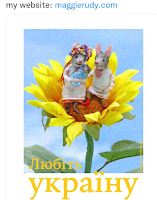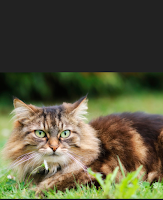Early morning, after rain overnight I think, the foliage is showing how they handle steaming hot and wet weather.
It's not comfortable for humans, high humidity with heavy rain adding to it, but the plants are in touch with their wild ancestors, and mosses are showing up.
The curry leaf plant at the foot of the Japanese maple is as happy as I've ever seen it. The lavender appears to be calming down having been hit by a car, had its roots torn out of the ground, then been moved several times. It's sitting there in the corner planning on a quiet rest of the summer.
I had a thrilling email from a blogista who tried her hand at cordage and made a very creditable length. It's so good to know someone tried and liked a new, to her, skill that she'd seen here. My work here is done!
However my reminder work will never be done. I don't use post it notes, because I know I won't notice them. I do visuals.
If my pill bottle is there, full mug of water, when I wake, it means take early morning pill. Then move mug over, so I remember that means post breakfast pills, then after them, put it empty next to evening pill bottle. After that pill, refill and put next to morning pills to continue the cycle.
Likewise keys, all keys in the little basket near where I put on shoes in the hallway. Even my neighbors know at this point where to find them!
And so on. I put appointments in my phone and mostly remember to check them. The phone is always on me. I literally don't move without it. Either in a deep pocket or a phone purse. An old person living alone owes it to everyone to do her bit for personal safety.
My wallet is always in my bag hanging in a designated spot, to avoid finding myself out and about without my vital documents.
It's not that my memory's poor so much as I'm always thinking about other people's doings, or what I'm reading, or what I'm making, or what I'm planning to cook, a lot of things more interesting than where's my stuff.
Currently after reading an extract from Ed Yong An Immense World,
I'm totally engrossed in thinking about the senses and how animals and we literally see the world so differently. So it's very likely I'd forget other things that aren't as gripping.
Gary stopped in to visit and talk about his dog and his new GPS tracker for when Billie makes off as she has a couple of times. He knows she makes appearances in this blog sometimes and likes it. I told him about Olga and he sends his condolences.
He knows about losing a beloved friend. He went a year after his last dog before he was ready for Billie and now she's very important, without replacing her predecessor. She's a different breed, small like Bennie, but different, her own personality.
And we talked sports, golf is not surprisingly too slow and uneventful for a man who loves basketball and motorcycles. He tells me we've got a pickleball court marked out on the tennis courts but games haven't started yet. No, I don't plan on it.
Sports are nearly as exciting to me as scraping carrots. Except I was a sharp badminton player. The real game, indoor, competitive, with great rackets.
Handsome Partner introduced me to it, and it rewards strategy and good eye hand coordination. Also small stature and foot speed. Not brute strength and endurance. Some world class players have been Asian, especially Indonesian. Small, powerful, speedy.
You have to be fit though. You don't let your heels down much, always on the balls of your feet ready for all directions. A good player doesn't get out of breath. Their opponents do though.
Happy day everyone, stay alert, you never know what might be coming at you around here.























































